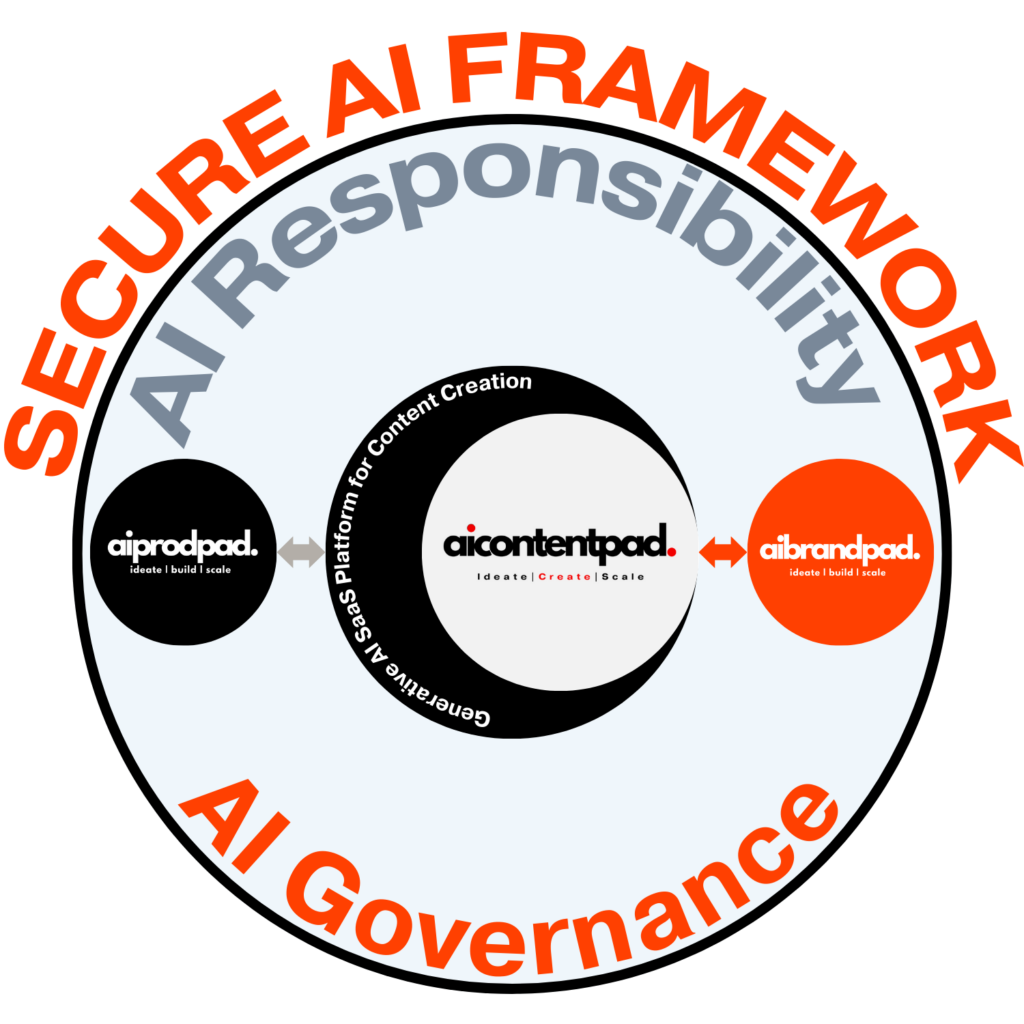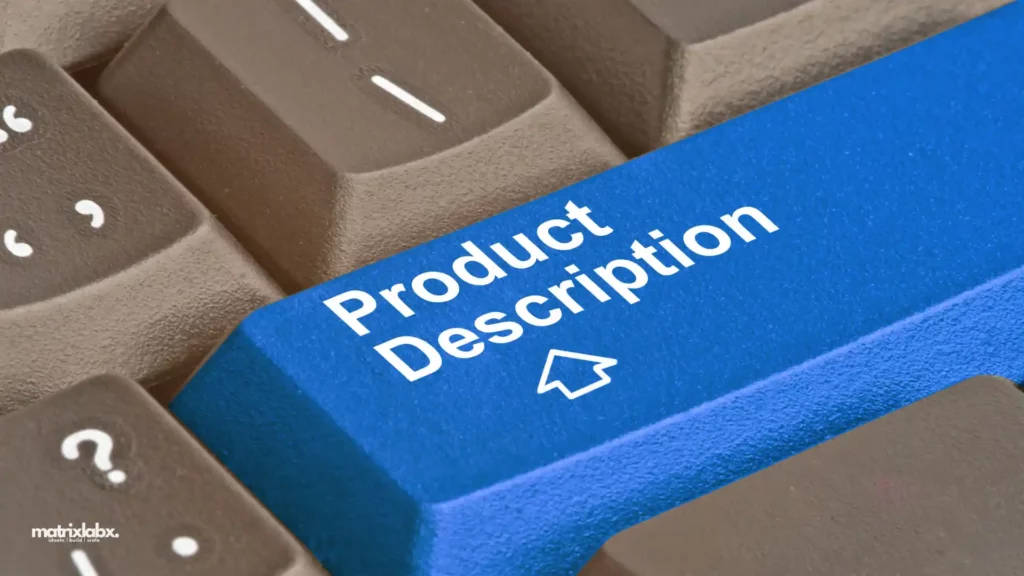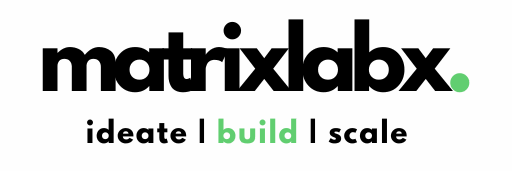How to Update Product Descriptions with AI
Learn how to update product descriptions with AI.
In the dynamic world of e-commerce, the struggle to maintain captivating and relevant Product Descriptions is a challenge that many face.
Businesses often find their product narratives workforce, losing the spark that initially drew customers in.
This stagnation, a silent sales killer, lurks in the shadows of every online store. It dulls the allure of your offerings, leading to a decline in engagement and conversion rates.
In this digital era, where customer preferences shift as rapidly as the wind, your product descriptions must match the pace and stay a step ahead.
Enter the transformative power of Artificial Intelligence (AI). The solution to revitalize your product narratives lies in leveraging AI’s unparalleled ability to analyze, adapt, and enhance content at an astonishing scale.
Imagine a world where your product descriptions are not just lines of text but dynamic narratives that evolve with market trends, customer preferences, and seasonal changes.
AI offers the key to unlocking this potential, turning mundane descriptions into compelling stories that resonate with your audience.
This blog will explore the seamless integration of AI into your content strategy, transforming how you approach product descriptions.
We’ll delve into practical steps, innovative techniques, and the incredible benefits of using AI to keep your product narratives fresh, engaging, and irresistibly appealing to your target market.
Welcome to the future of e-commerce storytelling, where AI is not just a tool but a game-changer in the art of captivating product descriptions.
Strategic Planning Essentials with AI
From AI Novice To AI Expert In 30 Days: Launch Your First Generative AI Use Case.

The Challenge of Updating 100,000+ Product Descriptions
The importance of compelling and accurate product descriptions. However, updating over 100,000 presents a significant challenge with several potential consequences:
Resource Constraints:
- Time and Cost: Updating a large content volume requires significant time and manpower, diverting resources from other critical marketing initiatives.
- Quality Control: Maintaining consistent quality and accuracy across this scale becomes increasingly difficult with manual effort, potentially leading to errors and inconsistencies.
Performance Concerns:
- Search Engine Optimization (SEO): Updating descriptions in bulk can trigger SEO penalties if not done strategically, impacting website visibility and organic traffic. However, with AI engineering and a good framework like a data moat, MatrixLabX has this issue fixed.
- Customer Experience: Inaccurate or poorly written descriptions can negatively impact customer experience, leading to confusion, frustration, and lost sales. With multi-chain prompt engineering, the LLM models are solid with SEO.
Potential Backlash:
- Brand Reputation: Inaccuracies or inconsistencies across product descriptions can damage brand trust and reputation, requiring significant rectification efforts. With the proper testing and prompt, this is handled. We have a great prompt for you.
- Customer Dissatisfaction: Customers who receive products that differ from their descriptions may be dissatisfied, leading to negative reviews and feedback.
Attempting to update 100,000+ product descriptions without careful planning and execution can negatively impact marketing performance, brand reputation, and customer experience.

The Math
One hundred thousand product descriptions are about 300 words (product webpages with 800 – 1000 words). One hundred thousand products take 20 minutes per product update (average) = 33,333.33 hours. It would take one person working on this about 4,167 days to update every product.
What if you could do that in 4 weeks? Would you do it? What if you had 50,000 products or maybe a million products?
The cost for this product update.
The cost for labor is $100 per hour.
$100 labor * 33,333.33 hours = $3,333,333.33
Would you do it for $1,000,000? What about $100,000? See my point. Product and website updates are not just changing around words and adding new ones. You have technical SEO, interlinking, and more to consider. And what is the comparative doing with your offering?
Updating 100,000 Product Descriptions: Cost and Time Breakdown

Here’s a breakdown of the time and cost involved in updating 100,000 product descriptions:
Time:
- Total update time: 100,000 products * 20 minutes/product = 2,000,000 minutes
- Total update hours: 2,000,000 minutes / 60 minutes/hour = 33,333.33 hours
Cost:
- Hourly rate: $100/hour
- Total cost: 33,333.33 hours * $100/hour = $3,333,333.33
It would take approximately 33,333.33 hours to update 100,000 product descriptions, with an estimated cost of $3,333,333.33. This translates to an hourly cost of $100.
Additional notes:
- This is an estimated cost and time frame. The actual time and cost may vary depending on the complexity of the product descriptions, the efficiency of the update process, and other factors.
- This cost only accounts for the time spent updating the descriptions. Additional costs may be incurred for tasks such as data preparation, quality assurance, and project management.
Potential cost savings:
- Consider automating the update process using AI tools like Google Vertex AI. This can significantly reduce the time and cost involved.
- Outsourcing the task to a professional content-writing service can also be cost-effective.
CFO’s perspective:
The CFO would likely be interested in the cost-effectiveness of the project. They would want to know if the benefits of updating the product descriptions outweigh the costs.
Here are some points to consider when discussing the project with the CFO:
- Impact on sales: Updated product descriptions can increase sales and customer satisfaction. This can be quantified and used to justify the cost of the project.
- Improved SEO: Accurate and keyword-optimized product descriptions can improve search engine ranking, increasing website traffic and sales.
- Reduced customer service costs: Clear and informative product descriptions can reduce customer inquiries and complaints, leading to cost savings.
You can convince the CFO to approve the budget for updating your product descriptions by presenting a clear and compelling case.
How long should a product description be?
The ideal word count for a product description depends on a few key factors:
Product type:
- Simple products (apparel, accessories): 125-150 words
- Complex products (electronics, appliances): 350-400 words
Target audience:
- Tech-savvy consumers: They may prefer concise and factual descriptions with key specifications.
- Emotionally driven consumers May respond better to longer descriptions with storytelling and benefits emphasized.
Product’s unique selling points (USPs):
- More complex USPs may require a longer explanation to capture customer attention.
The goal is to find the sweet spot between providing enough information to inform customers and maintaining attention with concise and engaging text.
Here are some additional guidelines:
- Focus on benefits, not just features. What problems does the product solve? How will it improve the customer’s life?
- Use active voice and clear language. Avoid jargon and technical terms that your target audience may not understand.
- Break text into digestible chunks. Use headings, bullet points, and short paragraphs to make the description easy to read.
- Optimize for search engines. Include relevant keywords throughout the description, but avoid keyword stuffing.
- Test different word counts and variations. Track your analytics to see what resonates best with your audience.
The best way to determine the ideal word count for your product descriptions is to experiment and see what works best for your specific audience and products.
The ideal length for a product web page depends on several key factors:
1. Product complexity:
- Simple products: 200-300 words can highlight key features and benefits effectively.
- Complex products: 500-1000 words or more may be needed to explain intricacies, address user concerns, and showcase various functionalities.
2. Target audience:
- Tech-savvy consumers: May be comfortable with longer, in-depth content with detailed specifications.
- General audience: May prefer shorter, more concise information with clear value propositions.
3. Content goals:
- Informative: Longer content allows for deeper dives into product features, benefits, and technical aspects.
- Persuasive: Shorter content can focus on key selling points and calls to action to drive conversions.
4. Page layout and design:
- Heavy visuals and multimedia: Text can be shorter as visuals convey information effectively.
- Minimalistic design: Text plays a more prominent role and may need to be more comprehensive.
5. SEO considerations:
- Adequate word count (300+) is crucial for search engine visibility, but keyword stuffing should be avoided.
- Content should be divided into clear sections with relevant headings and subheadings.
Instead of a fixed word count, I recommend a flexible approach:
- Start with a core message: Communicate the product’s value proposition in concise sentences.
- Build upon the core: Add details, specifications, benefits, and visuals gradually, depending on the abovementioned factors.
- Prioritize readability: Use clear language, break text into digestible chunks, and emphasize key information with bold statements, bullet points, and numbered lists.
- Measure and adapt: Monitor user engagement metrics and A/B test different content lengths to find the optimal length for your specific audience and product.
The ideal length is not a fixed number but a balance between providing enough information and maintaining user engagement. By focusing on clarity, conciseness, and tailoring content to your needs, you can create compelling product web pages that effectively inform, persuade, and achieve your marketing goals.
Recommended Approach
Instead of a direct, bulk update, I propose a more strategic approach:
1. Prioritization:
- Identify high-impact products: Analyze sales data and user behavior to identify products driving the most traffic and revenue. These should be prioritized for description updates.
- Analyze current descriptions: For immediate attention, identify products with outdated, inaccurate, or poorly written descriptions.
2. Content Optimization:
- Develop a clear and concise style guide for product descriptions to ensure consistency and quality.
- Utilize keywords relevant to SEO while maintaining natural language flow.
- Include clear product specifications and benefits.
- Highlight unique selling points and differentiate them from competitors.
3. Scalable Solutions:
- Consider using a Product Information Management (PIM) system to streamline content creation, editing, and publishing across various platforms.
- Explore AI-powered content creation tools to automate repetitive tasks and ensure consistency across descriptions.
- Outsource content creation to specialized agencies or freelance writers to manage the workload.
4. Testing and Monitoring:
- A/B tests different descriptions to measure performance and optimize for conversions.
- Monitor customer feedback to identify areas for improvement.
- Track SEO performance to ensure updates do not negatively impact organic rankings.
By implementing a strategic approach focusing on prioritization, content optimization, scalable solutions, and continuous testing, we can overcome the challenges of updating 100,000+ product descriptions and achieve positive results in terms of marketing performance, brand reputation, and customer satisfaction.
How to update 100,000 products with Google’s Vertex AI
Updating 100,000 Products with Google’s Vertex AI: A Marketing Operations Manager’s Guide
As a marketing operations manager, you understand the importance of efficient and scalable product updates. Manual updates are impractical and prone to errors when dealing with large catalogs like 100,000 products. Google’s Vertex AI can be your solution, offering a powerful and automated tool for product information management.
Here’s how you can leverage Vertex AI to update your 100,000 products:
1. Data Preparation:
- Export your existing product data: This could be from a CSV file, database, or any other source. Ensure the data is clean and structured with consistent formatting.
- Identify product update categories: What updates do you need to make (e.g., prices, descriptions, images)? Categorize updates for efficient processing.
- Prepare update files: Create separate files for each category with the corresponding changes. Standardize the format for easier integration.
2. Vertex AI Pipeline:
- Create a Vertex AI pipeline: This orchestrates the entire update process, automating each step.
- Data ingestion: Use Vertex AI Dataflow to ingest your product data and update files into Vertex AI.
- Data transformation: Apply Vertex AI’s AI-powered tools like AutoML Tables or BigQuery ML to automate data transformation. This could involve tasks like data cleaning, normalization, and feature engineering.
- Model training: If needed, train Vertex AI models for tasks like image classification or product description generation.
- Product update: Use Vertex AI’s batch prediction or online prediction services to apply trained models or predefined rules to update your product data.
- Data validation: Implement data validation steps to ensure the accuracy and completeness of updated information.
- Output updated data: Export the updated product data in a format compatible with your existing systems.
3. Deployment and Monitoring:
- Deploy the Vertex AI pipeline: Schedule automatic runs to keep your product data updated regularly.
- Monitor performance: Track key metrics like pipeline execution time, data quality, and update accuracy.
- Refine the pipeline: Based on monitoring data, refine your pipeline steps and models to improve performance and accuracy.
Benefits of using Vertex AI:
- Scalability: Easily handle large product catalogs with automated processing.
- Efficiency: Reduce manual effort and time spent on product updates.
- Accuracy: Minimize errors with AI-powered data transformation and validation.
- Flexibility: Customize the pipeline to meet your specific needs.
- Cost-effectiveness: Pay per use, making it scalable and budget-friendly.
Additional considerations:
- Security: Securely store and access your product data within Vertex AI’s managed environment.
- Compliance: Ensure compliance with relevant regulations and data privacy laws.
- Team collaboration: Integrate your pipeline with existing marketing and product teams for a seamless workflow.
By leveraging Vertex AI’s capabilities, you can streamline product updates for your 100,000 products, saving time and resources and ensuring accurate and consistent information for your customers.
Remember, this is just a general guide, and if You need further assistance, just give us a call. Tailor the process to your specific needs and technical expertise. Consider seeking assistance from Google Cloud experts to implement Vertex AI for your product updates successfully.
How MatrixLabX Helps Marketing Agencies
How MatrixLabX Powers Marketing Agencies and Scales Businesses with AI
Our AI automation solutions are empowering marketing agencies and driving business growth. In today’s competitive landscape, agencies must be agile, efficient, and data-driven to thrive. MatrixLabX provides the tools and technologies necessary to achieve these goals and unlock their full potential.
MatrixLabX helps agencies:
- Automate Repetitive Tasks: Our AI automates time-consuming tasks like ad copy generation, social media management, and campaign reporting. This frees up valuable agency resources for high-level strategy and creative development.
- Optimize Campaigns: MatrixLabX’s AI analyzes campaign data in real-time, identifying insights and opportunities for improvement. Agencies can maximize ROI and deliver exceptional client results by constantly optimizing campaigns.
- Personalize Customer Experiences: Our AI personalizes marketing messages and experiences across all touchpoints, leading to increased customer engagement and loyalty. Agencies can leverage this technology to build stronger relationships with their clients’ audiences.
- Scale Operations: MatrixLabX allows agencies to scale their operations efficiently and cost-effectively. By automating tasks and optimizing workflows, agencies can handle more clients and projects without sacrificing quality.
- Gain Competitive Advantage: Agencies gain a competitive edge in the market by embracing AI. They can offer their clients cutting-edge solutions and deliver previously impossible results.
Examples of how MatrixLabX has helped agencies:
- A leading social media agency used MatrixLabX to automate content creation and scheduling, saving over 20 hours per week per employee. This allowed them to take on more clients and grow their business by 30%.
- A B2B marketing agency used MatrixLabX’s AI-powered lead generation tool to identify and target high-quality leads. This resulted in a 150% increase in qualified leads and a 60% increase in sales in 12 months.
- A retail marketing agency used MatrixLabX to personalize their email marketing campaigns. This resulted in a 39% increase in open rates and a 20% increase in click-through rates.
These are just a few examples of how MatrixLabX is helping marketing agencies transform their businesses and achieve remarkable results.
Key benefits of using MatrixLabX:
- Increased Efficiency
- Improved ROI
- Enhanced Customer Experiences
- Scalable Operations
- Competitive Advantage
If you’re a marketing agency looking to take your business to the next level, I encourage you to explore MatrixLabX’s AI automation solutions. We can help you achieve your goals and unlock your full potential.
